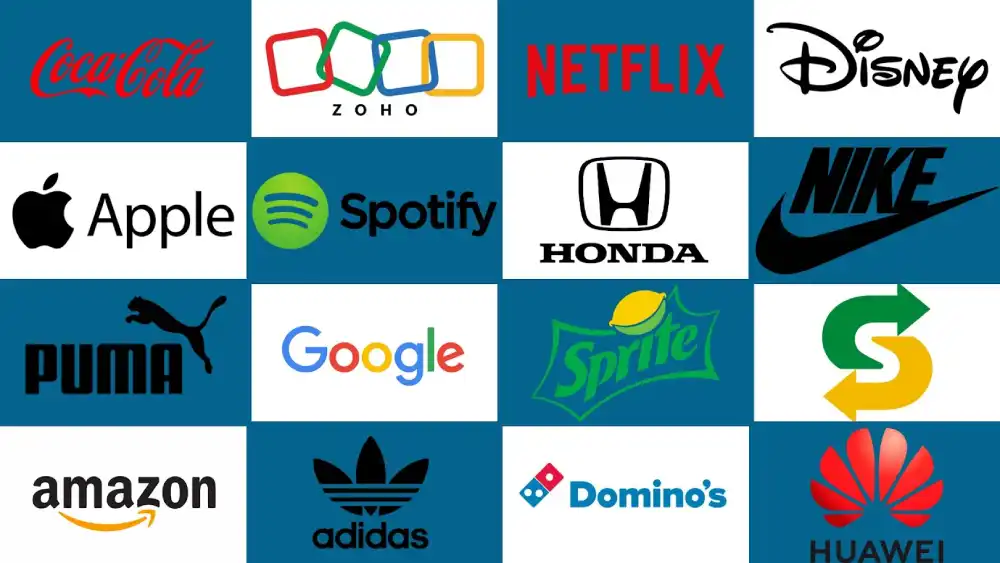Word Mark vs Device Mark: Key Differences
Overview : In today's competitive business landscape, establishing and protecting your brand identity is paramount to success. Trademarks serve as powerful tools that safeguard your intellectual property and distinguish your goods or services from competitors. Among the various types of trademarks, Word Marks and Device Marks represent fundamental categories that offer distinct advantages and protection scopes. This comprehensive guide explores the nuances of these trademark types, their legal frameworks, strategic applications, and how businesses can leverage them effectively for comprehensive brand protection.
Introduction to Trademark and its Types
The modern commercial world thrives on effective branding strategies. From multinational corporations to small businesses, establishing a distinctive brand presence has become essential for market success. Intellectual property rights, particularly trademarks, have proven to be invaluable assets that withstand the test of time and help businesses maintain their competitive edge.
Governed by the Trademarks Act, 1999 in India, trademarks are defined as marks capable of graphical representation that distinguish goods or services of one entity from those of others. While trademarks encompass various elements like brand names, logos, slogans, and even sounds, they primarily fall into two major categories: Word Marks and Device Marks. Understanding the distinction between these two trademark types is crucial for businesses seeking comprehensive protection for their brand assets.
Legal Definitions and Statutory Framework
Under Section 2(zb) of India's Trademarks Act, 1999, a trademark is defined as a mark capable of graphical representation that distinguishes goods/services from competing entities. This broad definition accommodates diverse brand identifiers, including Word Marks and Device Marks, apart from other forms of trademarks.
| Word Marks | Device Marks |
|---|---|
| Textual elements like brand names (e.g., "Nike") or slogans ("Just Do It") devoid of any stylisation | Visual components such as logos (Apple's bitten apple), colour schemes (Cadbury's purple), or sound signatures (Intel's chime) |
Section 17 of the Trademark Act 1999 clarifies that device mark registrations protect specific visual configurations rather than individual textual elements within designs. This distinction became pivotal in Vasundhra Jewellers Pvt. Ltd v. Kirat Vinodbhai Jadvani & Anr (2022), where the Delhi High Court denied protection for the standalone word "VASUNDHRA" despite the plaintiff's registered logo.
Defining Word Marks and Device Marks
Word Marks (Textual Brand Identifiers): Word Marks are trademarks consisting solely of text elements without any graphic design, stylisation, or visual components. These can include:
- Brand names (e.g., "Microsoft")
- Slogans ("Think Different")
- Product names ("iPhone")
- Domain names (amazon.com)
The registration of a Word Mark protects the specific word or phrase regardless of font, style, colour, or presentation. For instance, if you register "CRUNCHY" as a Word Mark for your biscuit brand, you gain exclusive rights to use this term for similar products in your registered categories (Trademark Class), regardless of how it's visually presented.
Word Marks can also extend beyond single words to include:
- Multiple words ("CRUNCHY FOREVER")
- Alphanumeric combinations ("CRUNCHY 900")
- Phrases or taglines ("LOVE YOUR CRUNCHY MOMENTS")
Device Marks (Visual Brand Identifiers)
A Device Mark protects the visual elements of your brand identity, including logos, symbols, and distinctive graphic designs, as registered with the trademark office. Unlike Word Marks, Device Marks safeguard the specific visual representation, requiring consistency in use to maintain protection. They excel in creating instant brand recognition, particularly across language barriers. Device Marks, by contrast, incorporate visual elements and designs. These can include:

- Logos and symbols
- Images and pictures
- Stylised text
- Colour combinations
- Unique shapes
- Unique shapes
- 3D representations
When registering "CRUNCHY" with an image of a child holding a biscuit as a Device Mark, the protection extends specifically to that combined visual representation. The registration protects the exact graphical configuration rather than the word "CRUNCHY" alone.
Comparative Analysis of Protection Scopes
Understanding the protection scope of Word Marks versus Device Marks is crucial for strategic brand management. The following table provides a comparison between various aspects of IP Protection for word marks and device marks.
| S.No | Aspect | Word Marks | Device Marks |
|---|---|---|---|
| 1. | Protection Scope | Broad coverage across fonts/styles | Limited to exact graphical reproduction |
| 2. | Flexibility | Adaptable to rebranding efforts | Requires consistent visual application |
| 3. | Search Complexity | Straight forward textual comparisons | Requires design similarity assessments |
| 4. | Consumer Recall | Relies on linguistic memorability | Leverages visual cognition |
For instance, while "CRUNCHY" as a Word Mark prevents competitors from using the term in any typographic form, its Device Mark counterpart (e.g., CRUNCHY with a child holding a biscuit) only bars similar visual representations.
Navigating Infringement in Digital Marketplaces
The digital landscape has introduced new challenges for trademark enforcement. Recent legal precedents like the 2024 Employsure v ACCC ruling established critical guidelines for online brand protection:
- Meta tag usage: Embedding competitor marks in website code constitutes infringement if it causes consumer confusion
- Visual SEO elements: Using protected logos in paid ads triggers liability regardless of disclaimer presence
This aligns with successful brand protection strategies like Swiggy's dual registration approach, where simultaneous registration of "SWIGGY" (Word Mark) and its orange-hued logo (Device Mark) enabled comprehensive protection against food delivery service imitators.
Integrated Registration Strategies
Leading intellectual property attorneys recommend a dual-filing approach for comprehensive brand protection. They typically advise businesses to begin with Priority Word Mark registration, which secures the core brand lexicon across industries, establishing fundamental verbal trademark rights regardless of visual presentation. This should be followed by subsequent Device Mark filing to protect branded visual assets from design plagiarism, creating a complementary layer of protection for logos, symbols, and distinctive visual elements. This strategic sequencing maximizes protection while managing costs, particularly beneficial for startups and growing businesses with limited initial resources for intellectual property investment.
For example, pharmaceutical giant Cipla maintains separate registrations for:
- Word Mark: "CIPLA" in standard text
- Device Mark: Blue-and-green capsule logo
- Sound Mark: Three-note jingle in TV ads
This multilayered strategy proved effective in 2023 when the company successfully enjoined a competitor using "Ciplah" with a similar pill-shaped logo.
Strategic Advantages of Dual Registration
Registering both Word Marks and Device Marks offers several strategic advantages:
- Comprehensive protection: Covers both textual and visual brand elements
- Flexibility in brand evolution: Allows for visual updates while maintaining core name protection
- Enhanced enforcement options: Provides multiple grounds for infringement claims
- International protection facilitation: Simplifies registration across jurisdictions with varying requirements
Conclusion
The strategic selection and registration of Word Marks and Device Marks play a pivotal role in comprehensive brand protection. While Word Marks offer broad textual protection regardless of presentation, Device Marks safeguard specific visual representations that enhance brand recognition. The most effective approach combines both trademark types to create a multilayered shield against potential infringement.
As digital platforms intensify brand visibility conflicts, this dual-mark approach transforms intellectual property from mere legal safeguards to strategic growth accelerators. By understanding the nuances of Word Marks and Device Marks, businesses can build resilient brand ecosystems that withstand market challenges and evolving competitive landscapes.
Implementing proactive registration strategies—including regular trademark audits, developing adaptive style guides, and filing defensive marks in adjacent product classes—can significantly reduce infringement risks while enhancing brand valuation metrics in financial statements for businesses looking to protect their brand identity in India, consulting with experienced trademark professionals can provide valuable guidance throughout the registration process.
FAQ's
1.What is a Word Mark and how does it differ from a Device Mark?
2.Which type of trademark provides stronger protection?
3.Can I register the same name as both a Word Mark and a Device Mark?
4.What happens if someone uses my Word Mark with a different design?
5.Are Word Marks and Device Marks equally protected under Indian trademark law?
6.How do international trademark registrations handle Word Marks versus Device Marks?
7.What strategies should startups follow for trademark protection with limited budgets?
8.How has the digital landscape affected trademark enforcement for Word Marks and Device Marks?
Author Bio

Sanjeev Kumar | in
Meet Sanjeev Kumar, a distinguished advocate before the Supreme Court of India, High Courts, and National Tribunals. Founding Partner of Juriskps Law Offices, a premier law firm, he specializes in commercial, corporate, tax, arbitration, and IPR matters. His incisive legal insights enrich Setindiabiz’s blog with expert commentary.
